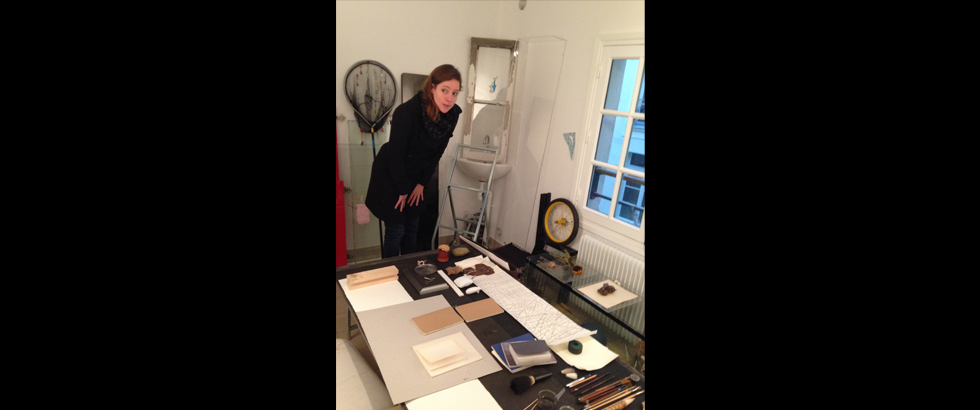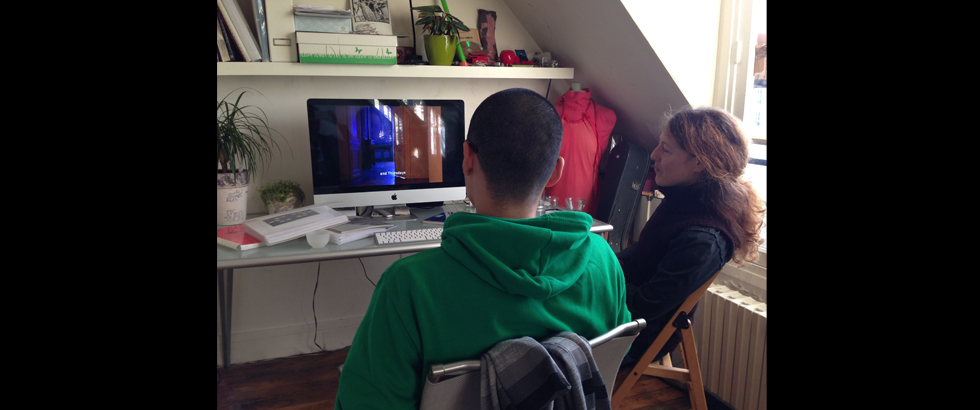Artists
Photo Credit: NIU Chun-Chiang
TSAI Jia-Zhen
TSAI Jia-Zhen
| Location | France / Paris |
|---|---|
| Residency | Cité Internationale des Arts |
| Year of the Grant | 2013 |
| Work | Ambiguous Being |
Creative Concepts/Thoughts on Residency Program:
This report on the residency program will focus on the exploration of the context of image, methods of displaying image, and visits to artist studios, as well as the preliminary plan for the achievement exhibition after the residency program. When I first applied for the residency program in early 2013, my proposed plan was expanded and further developed from the concept of my video research project (“Ambiguous Being” 2012) in the previous year, as I aimed to carry out observation and research on “playing and method of display” of moving image, and to come up with a playing plan.
Before I went to Cité Internationale des Arts, I already knew that the French contemporary art scene and development were not as vibrant. Nonetheless, Cité Internationale des Arts in Paris was still my number one choice because Paris is an European city; compared to New York (residency programs for curators were only offered by ISCP in New York and Cité in Paris), staying in Paris for residency program made it more convenient to visit other European countries and cities, and provided greater networking potential. That was why when I first moved into the art village, I looked up all the information and locations of art institutions in Paris, and marked on a map of Paris. This was also a symbolic move of “positioning before action”.
To me, this Art Map was significant not only because it made art exploration in Paris easier, it was more symbolic as I positioned myself first, gained clear idea of my direction, and then took actions. Although Cité Internationale des Arts could not provide curators and artists in residence necessary networks (a fact that I was already aware of in advance, as the previous curator in residence had mentioned the situation), but it was a great opportunity for me to settle down, confront and consider my own situation. When I was in Taiwan, I was always in an anxious state of mind to produce works and exhibitions. I believe I was not the only person facing this issue; it was a shared anxiety (for related information, please refer to two essays by Wang Sheng-Hung in November 2013: Duality of Labor in form of Friendship Exchange: On “Are We Working too Much?” and Its Development, and “Saying No” is the Beginning of Proactive Resistance: About the Hidden Harms at Working Environment of Art). This residency program, on the other hand, allowed me to settle down and really consider opportunities for my own development.
Before the residency program, I backpacked through Central Asia and the Caucasus Mountains, travelling to three or four countries; that one place I was not sure if it is a country was not Taiwan; it was a small country on the border of Georgia called Batumi, which in name is an autonomous republic, but is actually a city of Georgia. As I entered and exited countless customs offices at borders and in airports, pinpointed political questions about identity were asked, such as “Where are you from?” and “Who are you?” For example, when I left Turkey and was entering Georgia, about five or six customs officers surrounded me as soon as I walked into the customs office. Since Georgia does not recognize ROC, I needed to go through special procedures; and most customs officers were not aware that Georgian government had just promulgated a new law allowing ROC passport with US visa to clear the customs with no additional documents. So when I told them about this new law, they asked me back: “Who told you this?” Not to mention Iran; they have strict laws regarding who enters and who will forever be kept off Iranian soils.
In contrast to the tensions in the Middle East, European customs offices, especially the French ones, seemed much more “wide-open”. For the many times of me entering and leaving France, the customs officers never flipped to and stamped on the page of my working visa in my passport; they simply stamped on a random page when they saw it was a ROC passport. However, with European Union’s wide-open borders and spirit of humanism, tensions tended to explode in the interiors. Whenever there were tensions and issues, it was evident that social disputes were resulted from binary opposition between right and left wings. With these personal experiences, as well as considerations on the context of my curatorial development, I planed to invite a Chinese (French) artist and a Singaporean (German) artist to visit Taiwan in the middle of the year to showcase their installations in to explore and illustrate “Tensional Boundary” (Temp.). On a certain contextual level, I would say this is the third and the final chapter of my “Boundary and Identity” series (with the first two being “Borderline‧Mirror like” in 2008 and “Ambiguous Being” in 2012.



